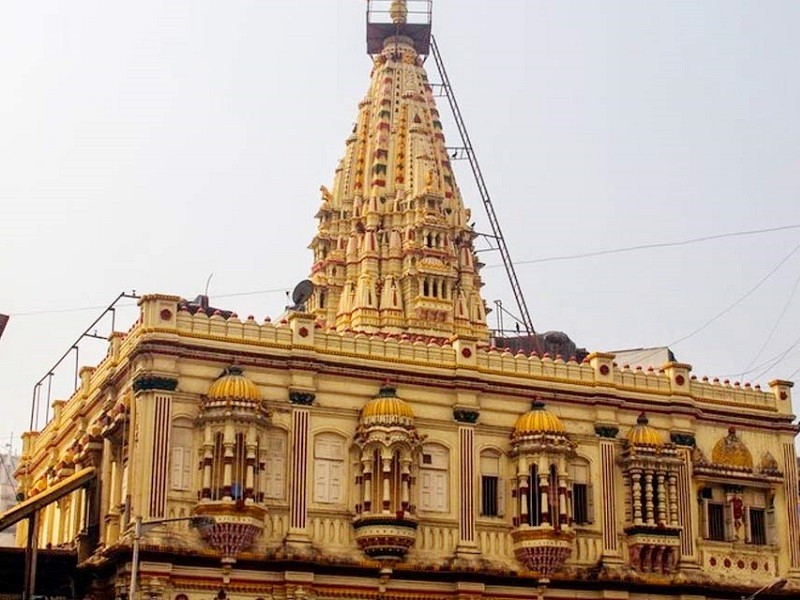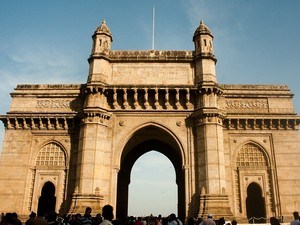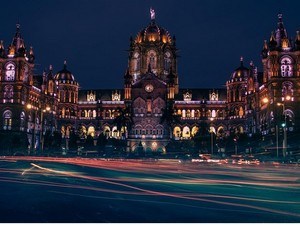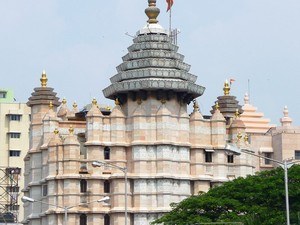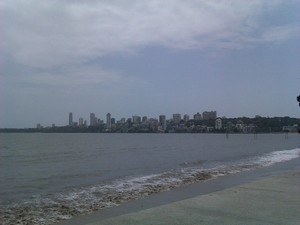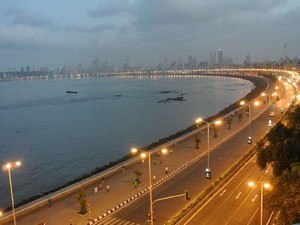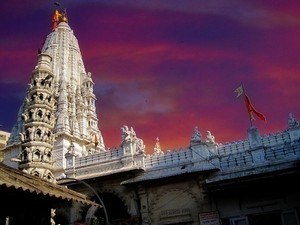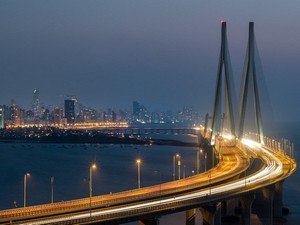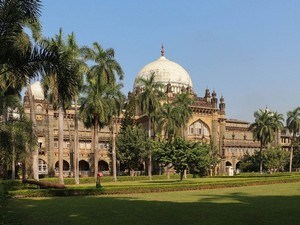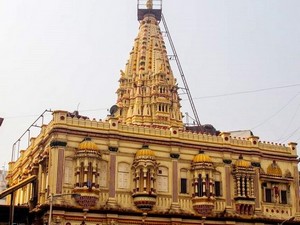Mumba Devi Temple, Mumbai - Timings, Festivals, History, Darshan, Pooja Timings
Photo Credit: Flickr
 India | Maharashtra | Mumbai
India | Maharashtra | Mumbai
 #34 of 46 Places to Visit in Mumbai
#34 of 46 Places to Visit in Mumbai
 Distance (From Chhatrapati Shivaji Terminus): 20 Kms
Distance (From Chhatrapati Shivaji Terminus): 20 Kms
 Trip Duration (Including Travel): 4 Hours/Half Day
Trip Duration (Including Travel): 4 Hours/Half Day
 Transportation Options: Cab
Transportation Options: Cab
 Travel Tips: None
Travel Tips: None
About Mumba Devi Temple
At a distance of 20 Km from Mumbai Chhatrapati Shivaji Terminus, Mumba Devi Temple is a Hindu temple situated in Bhuleshwar area of South Mumbai, Maharashtra. Mumba Devi Temple is dedicated to the goddess Mumba, who is regarded as the local manifestation of Parvati. The goddess Mumba serves as the patron deity of the Koli community, the original inhabitants of the Seven Islands of Bombay. She is also recognized as 'Goddess Shakti,' symbolizing power. The present name of the city is derived from the goddess Mumba. It is one of the popular places to visit as part of the Mumbai packages.
History of Mumba Devi Temple
The Mumba Devi Temple is among the oldest and most esteemed temples in Mumbai, with origins tracing back to the 14th century. The name 'Mumba' is believed to derive from the fusion of 'Maha' and 'Amba,' which means 'great mother.' According to tradition, the temple was first founded by Koli fishermen in Bori Bunder around 1675, as they regard the goddess as their guardian. It is thought that the original temple was destroyed between 1739 and 1770, and the present structure was constructed in Zaveri Bazaar, Bhuleshwar, in 1737.
Mythology of Mumba Devi Temple
The Mumba Devi Temple is dedicated to the goddess Parvati, who is revered in her incarnation as a fisherwoman. In order to embody Mahakali, Parvati needed to cultivate perseverance and focus. At that time, Lord Shiva encouraged her to reincarnate as a fisherwoman, believing that she would acquire these essential qualities, much like a fisherman does while mastering the art of fishing. Consequently, Parvati took on the form of a fisherwoman and settled among the fishermen in what is now Mumbai. In her youth, she was known as Matsya, but later she became recognized as Mumba in her fisherwoman guise. Mumba devoted herself to learning perseverance and concentration under the tutelage of the fishermen, who excelled in their craft through these very traits. Once she had perfected these skills, the moment arrived for her to return to her original realm. Lord Shiva appeared as a fisherman and married Mumba, acknowledging her true identity. Subsequently, the fishermen implored her to remain with them permanently, and she was honored as the village goddess. The locals referred to her as 'Aai,' meaning 'mother' in Marathi, which led to her being called Mumba Aai, and thus, the city of Mumbai derived its name from her.
Architecture of Mumba Devi Temple
The temple's architecture reflects the style of 19th-century Gujarati temple design. The temple showcases intricately carved wooden doors and sculptures, reflecting the rich cultural heritage of the city. The main shrine houses the idol of Mumba Devi, which is a distinctive black stone idol adorned with a robe, a silver crown, a nose stud, and multiple layers of gold jewelry. In front of the shrine stands a tiger, the carrier of the Goddess. The Mumba Devi Temple also includes shrines dedicated to Sri Jagadamba, Sri Annapurna, and Sri Hanuman.
Festivals of Mumba Devi Temple
The Mumba Devi Temple, located in Mumbai, hosts a variety of festivals throughout the year, with Navratri being the most significant. This festival is celebrated over nine nights and ten days, occurring first in the month of Chaitra (March/April) and then again in Ashvin (September-October). Other notable festivals include Magh Navratri (Gupt Navratri), Chaitra Navratri, Aashad Navratri (Gupt Navratri), Ashvin Navratri, and the Shree Mumba Devi Annakut Mohotsav. Additionally, Mumba Devi Vardhapan Din, which marks the birth anniversary, is celebrated on Magh Ekadashi.
Dress Code & Other Restrictions of Mumba Devi Temple
Although Mumba Devi Temple does not enforce a strict dress code, it is advisable to wear modest attire that covers the upper arms and legs as a mark of respect. Men are encouraged to don a dhoti or pajama along with an upper garment, or alternatively, formal trousers and shirts. Women may choose to wear a saree, half saree, or chudidhars. It is recommended to avoid modern clothing such as mini-skirts, shorts, and sleeveless tops while visiting the temple.
While the temple is open to all, the inner sanctum where the deity is enshrined is restricted to Hindus only. This is a common practice in many Hindu temples to maintain the sanctity of the deity and the rituals associated with it.
Mumba Devi Temple Timings
Monday: 7 AM - 8:45 PM
Tuesday: 7 AM - 8:45 PM
Wednesday: 7 AM - 8:45 PM
Thursday: 7 AM - 8:45 PM
Friday: 7 AM - 8:45 PM
Saturday: 7 AM - 8:45 PM
Sunday: 7 AM - 8:45 PM
Mumba Devi Temple Entry Fee
General Entry is Free
Special Darshan available for Rs. 100
Best Time to Visit Mumba Devi Temple
The best period to visit Mumba Devi Temple is between October and March, when the weather is pleasant and ideal for temple visits. To fully immerse yourself in the temple's spiritual atmosphere, consider scheduling your visit during the Navratri Festival, which features grand celebrations including special rituals, chanting, and prayers. The summer months from March to June can be excessively hot and humid, while the monsoon season from June to September is characterized by heavy rainfall that may disrupt travel plans.
How to Reach Mumba Devi Temple
Chhatrapati Shivaji International Airport, located approximately 25 kilometers from Mumba Devi Temple, serves as the closest airport. It offers extensive flight connections to prominent international destinations such as Dubai, Sri Lanka, Thailand, Malaysia, Singapore, the USA, and Europe, as well as various domestic locations including Hyderabad, Bangalore, Chennai, Delhi, Jaipur, Kochi, Trivandrum, Kolkata, and Goa. Additionally, the Victoria Terminus and Bombay Central Stations in Mumbai provide robust train services linking the city to major towns and cities across India, including Delhi, Kolkata, Chennai, Hyderabad, and Bangalore. Mumbai is also efficiently connected by bus to cities like Bangalore, Hyderabad, Mangalore, Goa, Ahmedabad, and Pune. Travelers can reach the temple from these locations by utilizing city buses, auto-rickshaws, or taxis.



